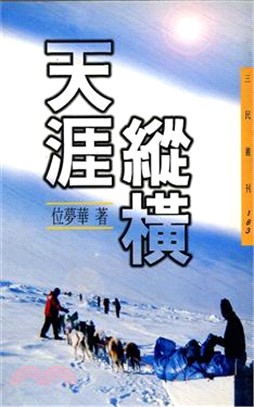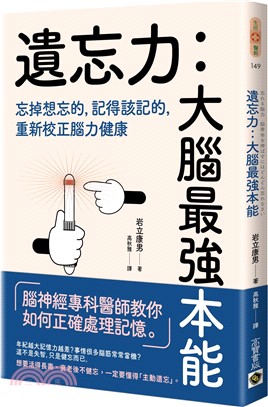SUPRAMOLECULAR CHEMISTRY 2E
商品資訊
商品簡介
Supramolecular Chemistry is an up-to-date, integrated textbook that tells the newcomer to the field everything they need to know to get started. Assuming little in the way of prior knowledge, the book covers the concepts behind the subject, its breadth, applications and the latest contemporary thinking in the area. It also includes coverage of the more important experimental and instrumental techniques needed by supramolecular chemists.
The book has been thoroughly updated for this second edition. In addition to the strengths of the very popular first edition, this comprehensive new version expands coverage into a broad range of emerging areas. Clear explanations of both fundamental and nascent concepts are supplemented by up-to-date coverage of exciting emerging trends in the literature. Numerous examples and problems are included throughout the book. A system of “key references” allows rapid access to the secondary literature, and of course comprehensive primary literature citations are provided. A selection of the topics covered is listed below.
|
|
Supramolecular Chemistry is a must for both students new to the field and for experienced researchers wanting to explore the origins and wider context of their work.
Review:
"At just under 1000 pages, the second edition of Steed and Atwood's Supramolecular Chemistry is the most comprehensive overview of the area available in textbook form...highly recommended."
Chemistry World, August 2009
作者簡介
Jerry L. Atwood was born in Springfield MO, USA in 1942. He attended Southwest Missouri State University, where he obtained his B.S. degree in 1964. He carried out graduate research with Galen Stuckey at the University of Illinois, where he obtained his Ph.D. in 1968. He was immediately appointed as an Assistant Professor at the University of Alabama, where he rose through Associate Professor (1972) to full Professor in 1978. In 1994 he was appointed Professor and Chair at the University of Missouri – Columbia. Professor Atwood is the author of more than 600 scientific publications. His research interests revolve around a number of themes in supramolecular chemistry including gas storage and separation and the control of confi ned space. He has also worked on the self-assembly of noncovalent capsules, liquid clathrate chemistry, anion binding and fundamental solid state interactions, and is a world-renown crystallographer. He co-founded the journals Supramolecular Chemistry (1992) and Journal of Inclusion Phenomena (1983). He has edited an enormous range of seminal works in supramolecular chemistry including the fi ve-volume series Inclusion Compounds (1984 and 1991) and the 11-volume Comprehensive Supramolecular Chemistry (1996). In 2000 he was awarded the Izatt-Christensen Prize in Supramolecular Chemistry.
目次
Preface to the First Edition.
Preface to the Second Edition.
Acknowledgements.
1 Concepts.
1.1 Definition and Development of Supramolecular Chemistry.
1.2 Classification of Supramolecular Host–Guest Compounds.
1.3 Receptors, Coordination and the Lock and Key Analogy.
1.4 Binding Constants.
1.5 Cooperativity and the Chelate Effect.
1.6 Preorganisation and Complementarity.
1.7 Thermodynamic and Kinetic Selectivity, and Discrimination.
1.8 Nature of Supramolecular Interactions.
1.9 Solvation and Hydrophobic Effects.
1.10 Supramolecular Concepts and Design.
2 The Supramolecular Chemistry of Life.
2.1 Biological Inspiration for Supramolecular Chemistry.
2.2 Alkali Metal Cations in Biochemistry.
2.3 Porphyrins and Tetrapyrrole Macrocycles.
2.4 Supramolecular Features of Plant Photosynthesis.
2.5 Uptake and Transport of Oxygen by Haemoglobin.
2.6 Enzymes and Coenzymes.
2.7 Neurotransmitters and Hormones.
2.8 Semiochemistry in the Natural World.
2.9 DNA.
2.10 Biochemical Self-Assembly.
3 Cation-Binding Hosts.
3.1 Introduction to Coordination Chemistry.
3.2 The Crown Ethers.
3.3 The Lariat Ethers and Podands.
3.4 The Cryptands.
3.5 The Spherands.
3.6 Nomenclature of Cation-Binding Macrocycles.
3.7 Selectivity of Cation Complexation.
3.8 Solution Behaviour.
3.9 Synthesis: The Template Effect and High Dilution.
3.10 Soft Ligands for Soft Metal Ions.
3.11 Proton Binding: The Simplest Cation.
3.12 Complexation of Organic Cations.
3.13 Alkalides and Electrides.
3.14 The Calixarenes.
3.15 Carbon Donor and π-acid Ligands.
3.16 The Siderophores.
4 Anion Binding.
4.1 Introduction.
4.2 Biological Anion Receptors.
4.3 Concepts in Anion Host Design.
4.4 From Cation Hosts to Anion Hosts – a Simple Change in pH.
4.5 Guanidinium-Based Receptors.
4.6 Neutral Receptors.
4.7 Inert Metal-Containing Receptors.
4.8 Common Core Scaffolds.
5 Ion Pair Receptors.
5.1 Simultaneous Anion and Cation Binding.
5.2 Labile Complexes as Anion Hosts.
5.3 Receptors for Zwitterions.
6 Molecular Guests in Solution.
6.1 Molecular Hosts and Molecular Guests.
6.2 Intrinsic Curvature: Guest Binding by Cavitands.
6.3 Cyclodextrins.
6.4 Molecular Clefts and Tweezers.
6.5 Cyclophane Hosts.
6.6 Constructing a Solution Host from Clathrate-Forming Building Blocks: The Cryptophanes.
6.7 Covalent Cavities: Carcerands and Hemicarcerands.
7 Solid-State Inclusion Compounds.
7.1 Solid-State Host-Guest Compounds.
7.2 Clathrate Hydrates.
7.3 Urea and Thiourea Clathrates.
7.4 Other Channel Clathrates.
7.5 Hydroquinone, Phenol, Dianin’s Compound and the Hexahost Strategy.
7.6 Tri-o-thymotide.
7.7 Cyclotriveratrylene.
7.8 Inclusion Compounds of the Calixarenes.
7.9 Solid-Gas and Solid-Liquid Reactions in Molecular Crystals.
8 Crystal Engineering.
8.1 Concepts.
8.2 Crystal Nucleation and Growth.
8.3 Understanding Crystal Structures.
8.4 The Cambridge Structural Database.
8.5 Polymorphism.
8.6 Co-crystals.
8.7 Z′ > 1.
8.8 Crystal Structure Prediction.
8.9 Hydrogen Bond Synthons – Common and Exotic.
8.10 Aromatic Rings.
8.11 Halogen Bonding and Other Interactions.
8.12 Crystal Engineering of Diamondoid Arrays.
9 Network Solids.
9.1 What Are Network Solids?
9.2 Zeolites.
9.3 Layered Solids and Intercalates.
9.4 In the Beginning: Hoffman Inclusion Compounds and Werner Clathrates.
9.5 Coordination Polymers.
10 Self-Assembly.
10.1 Introduction.
10.2 Proteins and Foldamers: Single Molecule Self-Assembly.
10.3 Biochemical Self-Assembly.
10.4 Self-Assembly in Synthetic Systems: Kinetic and Thermodynamic Considerations.
10.5 Self-Assembling Coordination Compounds.
10.6 Self-Assembly of Closed Complexes by Hydrogen Bonding.
10.7 Catenanes and Rotaxanes.
10.8 Helicates and Helical Assemblies.
10.9 Molecular Knots.
11 Molecular Devices.
11.1 Introduction.
11.2 Supramolecular Photochemistry.
11.3 Information and Signals: Semiochemistry and Sensing.
11.4 Molecule-Based Electronics.
11.5 Molecular Analogues of Mechanical Machines.
11.6 Nonlinear Optical Materials.
12 Biological Mimics and Supramolecular Catalysis.
12.1 Introduction.
12.2 Cyclodextrins as Enzyme Mimics.
12.3 Corands as ATPase Mimics.
12.4 Cation-Binding Hosts as Transacylase Mimics.
12.5 Metallobiosites.
12.6 Haem Analogues.
12.7 Vitamin B12 Models.
12.8 Ion Channel Mimics.
12.9 Supramolecular Catalysis.
13 Interfaces and Liquid Assemblies.
13.1 Order in Liquids.
13.2 Surfactants and Interfacial Ordering.
13.3 Liquid Crystals.
13.4 Ionic Liquids.
13.5 Liquid Clathrates.
14 Supramolecular Polymers, Gels and Fibres.
14.1 Introduction.
14.2 Dendrimers.
14.3 Covalent Polymers with Supramolecular Properties.
14.4 Self-Assembled Supramolecular Polymers.
14.5 Polycatenanes and Polyrotaxanes.
14.6 Biological Self-Assembled Fibres and Layers.
14.7 Supramolecular Gels.
14.8 Polymeric Liquid Crystals.
15 Nanochemistry.
15.1 When Is Nano Really Nano?
15.2 Nanotechnology: The ‘Top Down’ and ‘Bottom Up’ Approaches.
15.3 Templated and Biomimetic Morphosynthesis.
15.4 Nanoscale Photonics.
15.5 Microfabrication, Nanofabrication and Soft Lithography.
15.6 Assembly and Manipulation on the Nanoscale.
15.7 Nanoparticles.
15.8 Endohedral Fullerenes, Nanotubes and Graphene.
Summary.
Thought Experiment.
References.
Index.
主題書展
更多書展本週66折
您曾經瀏覽過的商品
購物須知
外文書商品之書封,為出版社提供之樣本。實際出貨商品,以出版社所提供之現有版本為主。部份書籍,因出版社供應狀況特殊,匯率將依實際狀況做調整。
無庫存之商品,在您完成訂單程序之後,將以空運的方式為你下單調貨。為了縮短等待的時間,建議您將外文書與其他商品分開下單,以獲得最快的取貨速度,平均調貨時間為1~2個月。
為了保護您的權益,「三民網路書店」提供會員七日商品鑑賞期(收到商品為起始日)。
若要辦理退貨,請在商品鑑賞期內寄回,且商品必須是全新狀態與完整包裝(商品、附件、發票、隨貨贈品等)否則恕不接受退貨。






















